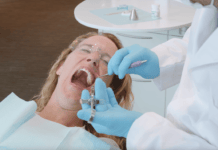You can’t open a dental industry magazine or social media page without seeing some information about sleep. Sleep apnea is a health crisis that affects almost a billion people worldwide. Dentistry is at the forefront of treating the symptoms of obstructive sleep apnea, and, of course, we all should be screening for symptoms.
But this isn’t just another apnea article. I want to delve into a phase of sleep that some of us are missing that is critical for our well-being.
Poor sleep is detrimental to your health. Environmental factors such as noise in the sleep environment or psycho-physiological factors where systems controlling sleep in your body are not aligned can be instrumental in depriving sleepers of enough hours asleep each night.
Importance of REM Sleep
We have two different types of sleep, and each is equally important. The two broad types are non-rapid eye movement (non-REM) sleep and rapid eye movement (REM) sleep. REM sleep is critical for whole-body health, especially mental health.
REM sleep is what most people know as “dream” sleep, and it should constitute about 20% to 25% of your total sleep, dependent upon how much sleep you normally get each night. It mostly takes place in the second half of your sleep cycle, from around 3 a.m. to 7 a.m. REM sleep is what is known as the final stage of sleep, meaning the final stage in a 90-minute cycle.
The first three stages of sleep are called non-REM sleep. Non-REM sleep is a quiet sleep state. The muscles are relaxed but maintain some tone. Breathing is regular, the cerebral cortex generates high-voltage waves, and the consumption of energy by the brain is minimal. Non-REM sleep accounts for 75% to 80% of total sleep.
Sleep Paralysis
REM is different than other stages in that your muscles are without movement, and your breathing is irregular. If you were to have an EEG at this time, it would show patterns as though you were awake. Your heart rate and blood pressure increase, and scientists believe that the paralysis (REM atonia) during REM is some type of evolutionary manifestation to keep you from hurting yourself or others from the activity during sleep.
Incidentally, a small proportion of people do not experience paralysis during dreaming, which can sometimes be drug-induced (with sleep aids like Ambien). These sleepers may get up and eat all of the Twinkies in the house. If the paralysis keeps me from unconsciously eating all the junk food, I’ll take it.
Paralysis works because of something called pons found at the base of the brain. REM sleep begins with signals from pons, and the signals travel to a brain region called the thalamus, which relays them to the cerebral cortex, the outer layer of the brain that is responsible for learning, thinking, and organizing information.
The pons also sends signals that shut off neurons in the spinal cord, causing temporary paralysis of the muscles in our extremities. Interesting (and thankfully), the lungs, diaphragm, and heart muscle are not paralyzed during REM sleep, nor are the eyes. Our eyes are darting around at an accelerated rate, hence the name Rapid Eye Movement.
Emotions
REM sleep helps to maintain emotional balance. “More specifically, the coolheaded ability to regulate our emotions each day — a key to what we call emotional IQ — depends on getting sufficient REM sleep night after night,” notes Dr. Matt Walker.1
REM sleep recalibrates and fine-tunes the emotional circuits in the human brain. REM sleep helps us understand facial expressions and body gestures and even group behavior. As clinicians, we evaluate and discern our patients’ and coworkers’ moods multiple times a day, and often our behavior toward them changes based upon our evaluation. Without proper REM sleep and its ability to adjust the brain’s emotional compass, we will be inaccurate, which may influence our behavior in return.
We have to be equipped to make accurate decisions for patient care and, hopefully, the appropriate times to apply compassion and understanding. The ability to interpret expressions and emotions is one of the most valuable abilities that one can possess in our profession.
Trauma
REM sleep can help offer some comfort from difficult or even traumatic events that happened during the day. Here’s how that works.
We all go through emotionally charged experiences every day and throughout our lives. Those experiences get stored in the brain as memories, and sleep plays an important role in processing those memories. REM sleep, in particular, appears to be especially important in processing painful and difficult memories. This process helps ease the emotional sting that these memories can exacerbate. It also helps your emotional mind return to a less-charged, more neutral state.
This nightly emotional reset is important for your ongoing mental health. When we enter dream sleep, a stress-related chemical called noradrenaline shuts off. This is the only time when your brain is without the anxiety-triggering molecule. Noradrenaline is the brain’s equivalent of the body’s adrenaline or epinephrine. This combination of a sufficient amount of dream sleep and low levels of noradrenaline in the brain enables us to “get over” our strong emotional experiences.
Learning, Memory, Problem Solving, and Creativity
People who are unable to enter REM sleep have a harder time remembering what they learned or experienced before falling asleep. A study of rats who were deprived of REM sleep had a reduced cell proliferation in the part of the brain that contributes to long-term memory.2
During non-Rem sleep, the brain locks in new memories. Then in REM sleep is where we append all the day’s information that we have assimilated to the “back catalog” of all our previous memory. During REM, you figure out why it all matters.
Dr. Walker likes to call it memory pinball, where new memories bounce around testing associations to determine what gets retained. During the day, we make routine connections, but REM sleep makes the more obscure connections and grand leaps of associative memory.
REM sleep assists in abstract problem-solving. A Harvard Medical School study reported that subjects could solve 30% more anagram word puzzles when they are tested after waking up from REM sleep than from non-REM sleep.3
REM sleep boosts creativity. Keith Richards credits a dream with the opening riff of Satisfaction. Salvatore Dali connected paintings to dreams, and Paul McCartney’s Yesterday was born from a dream. REM is when we get all those creative uses for a plastic saliva ejector, i.e., a coffee stirrer, a straw, or chopsticks.
Migraines
Lack of REM sleep has been linked to migraine headaches. Sleep problems can trigger migraines by causing instability of serotonin and a lowering of dopamine levels. A 2016 study showed definite connections between the quality of patients’ sleep and the frequency of migraines.
The most commonly noted connection was poor or disturbed sleep patterns in REM sleep. The dream phase is when our bodies produce serotonin and dopamine, which are two neurotransmitters that are important for regulating pain. When sleep is disturbed, it can result in insufficient production. When REM sleep is interrupted, impulses from the nerve cells cause blood vessels to constrict and then expand, releasing chemicals and inflammatory substances that cause pain. This is a common cause of migraines that develop just after sleep is disturbed, which explains why migraines occur so frequently in the early morning.4
Getting More REM Sleep
- Address any apnea issues you may have because those apnea events are more likely to occur during REM sleep.
- Avoid alcohol before bed. Alcohol can reduce the number of REM sleep phases you experience.
- Meditate
- Try to get an adequate amount of sleep (7-9 hours) and try to reduce nighttime awakenings. Keeping the bedroom cold, dark, and devoid of cell phones helps to drive down waking in the middle of the night.
- Many of our jobs require us to wake during the time when we get the most amount of REM sleep. There is no simple solution for our office hours being moved earlier in the morning or our commute times getting longer.
- Tracking sleep may guide you in finding inconsistencies. There are many Android and IOS phone apps designed to communicate with smartwatches. You can easily utilize your Fitbit as well. I recently bought a ring made by Oura that tracks all areas of sleep, pulse rate, and body temperature. Tracking sleep is not without pitfalls. I personally have to pay attention to over-tracking, which leads to me becoming more anxious about my sleep than causing me to get less. It’s always something isn’t it?
In the spirit of my sweet Mom: “Sleep well, honey.”
Before you leave, check out the Today’s RDH self-study CE courses. All courses are peer-reviewed and non-sponsored to focus solely on pure education. Click here now.
Listen to the Today’s RDH Dental Hygiene Podcast Below:
References
- Walker, M. Why We Sleep: Unlocking the Power of Sleep and Dreams. Scribner Book Company, 2018.
- Days of REM Sleep Deprivation Affects Forebrain, Long-term Memory in Rats. ScienceDaily. American Academy of Sleep Medicine. (2008, February 6). Retrieved from www.sciencedaily.com/releases/2008/02/080201085713.htm.
- Stickgold, R., Fosse, R., Walker, M.P. Linking Brain and Behavior in Sleep-dependent Learning and Memory Consolidation. Proceedings of the National Academy of Sciences.Dec 2002; 99(26): 16519-16521. DOI:10.1073/pnas.012689199. Retrieved from https://www.pnas.org/content/99/26/16519.full.
- Lin, Y.K., Lin, G.Y., Lee, J.T., et al. Associations Between Sleep Quality and Migraine Frequency: A Cross-Sectional Case-Control Study. Medicine (Baltimore). 2016; 95(17): e3554. DOI:10.1097/MD.0000000000003554. Retrieved from https://www.ncbi.nlm.nih.gov/pmc/articles/PMC4998727/.









